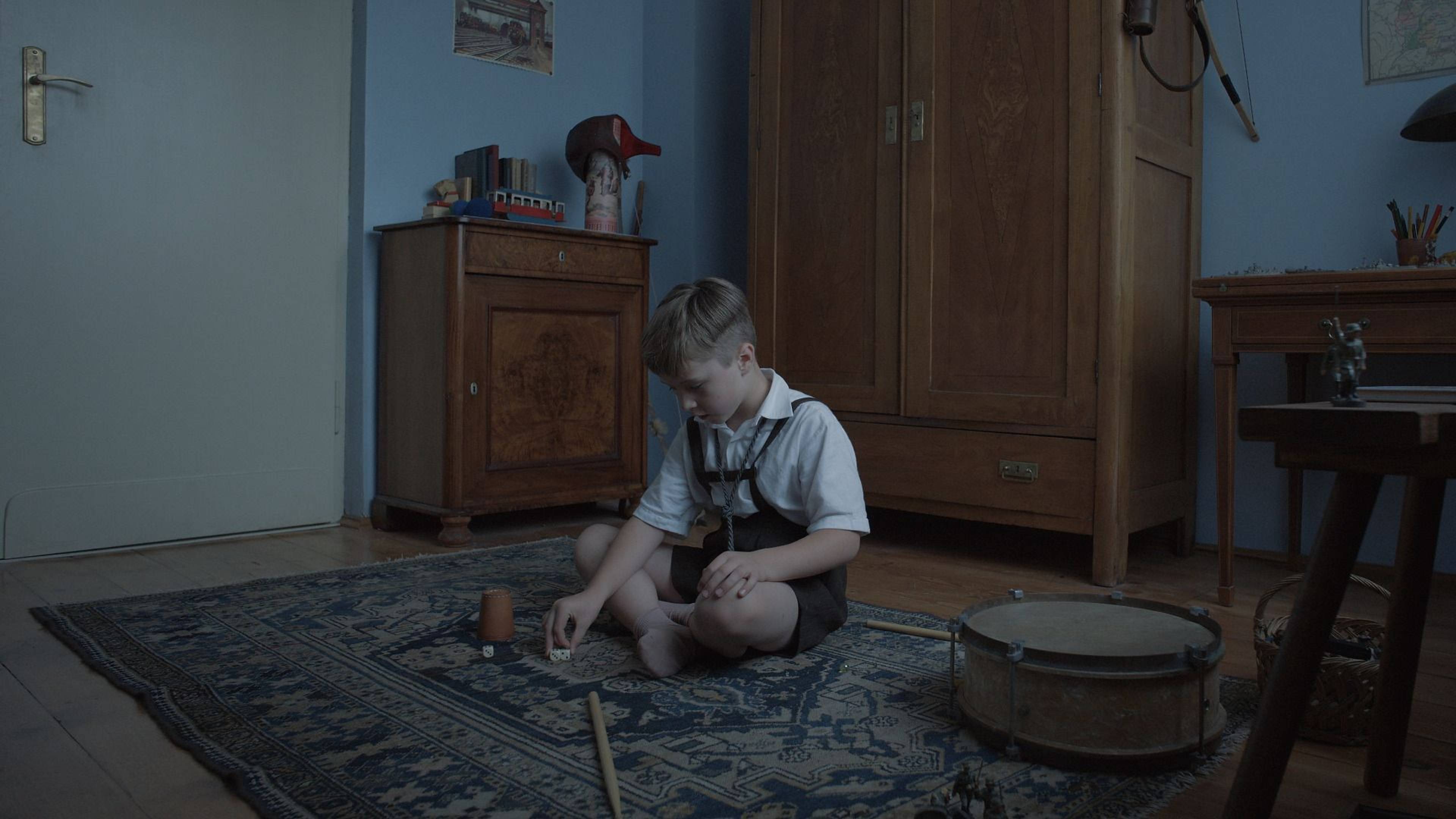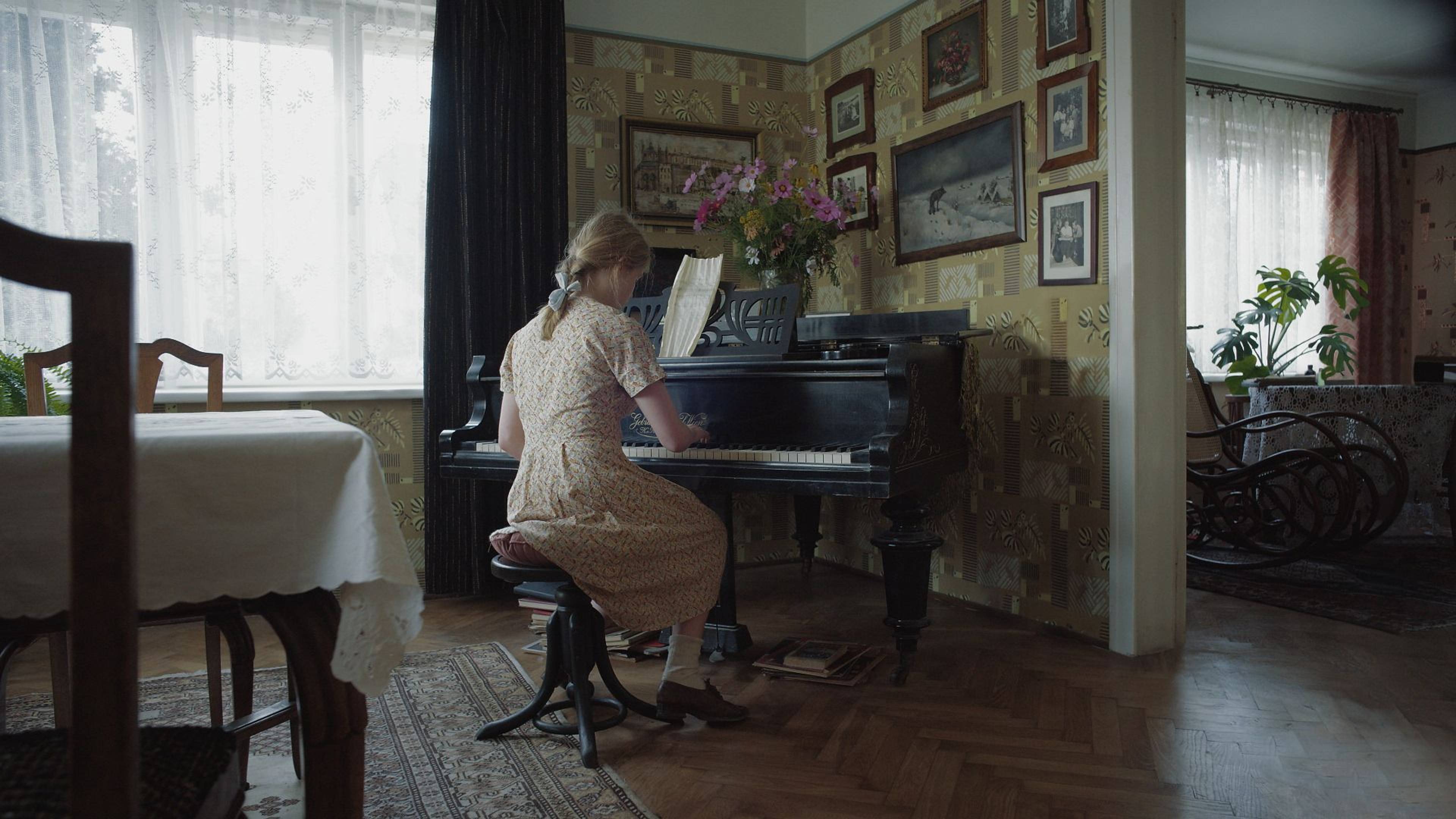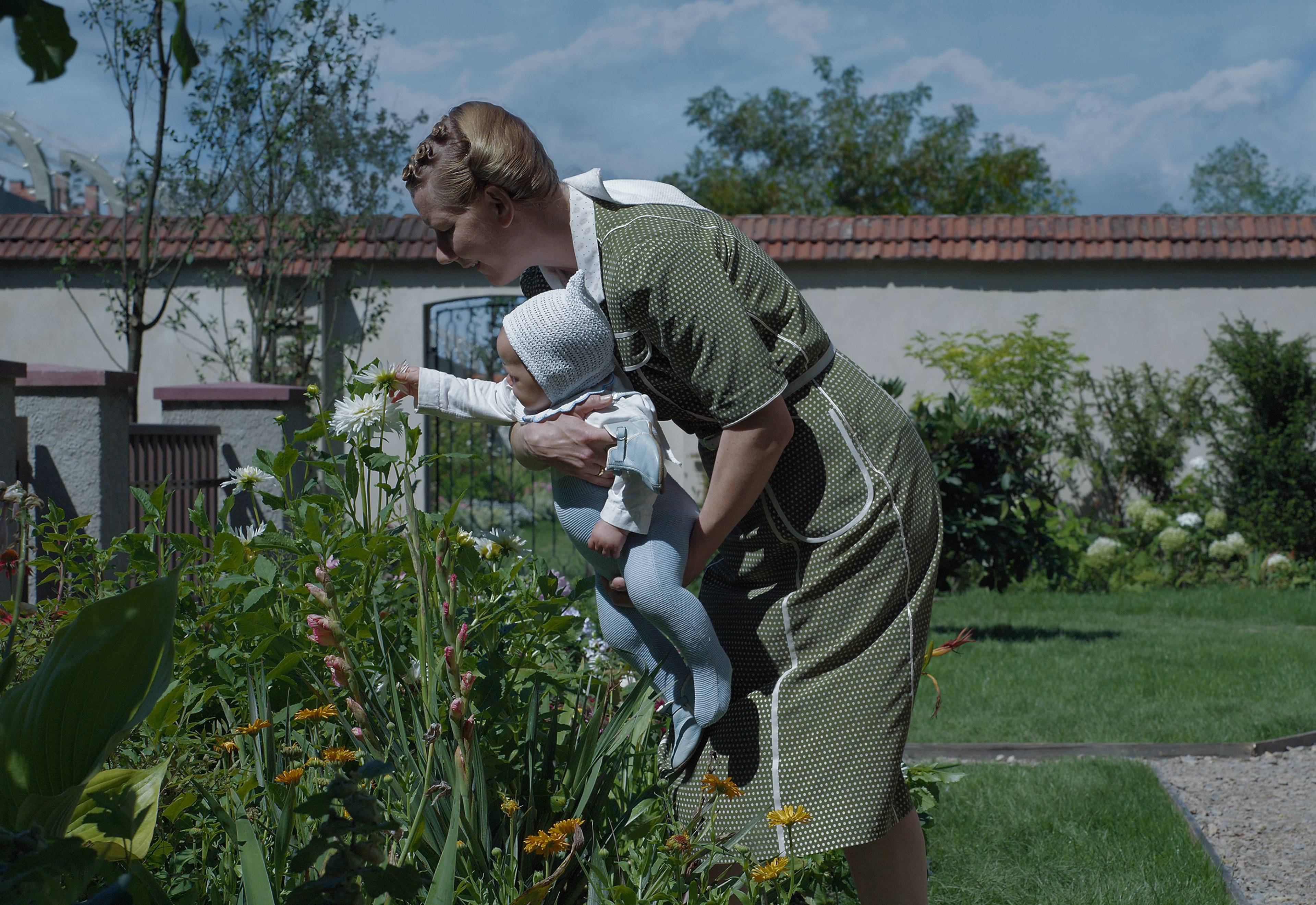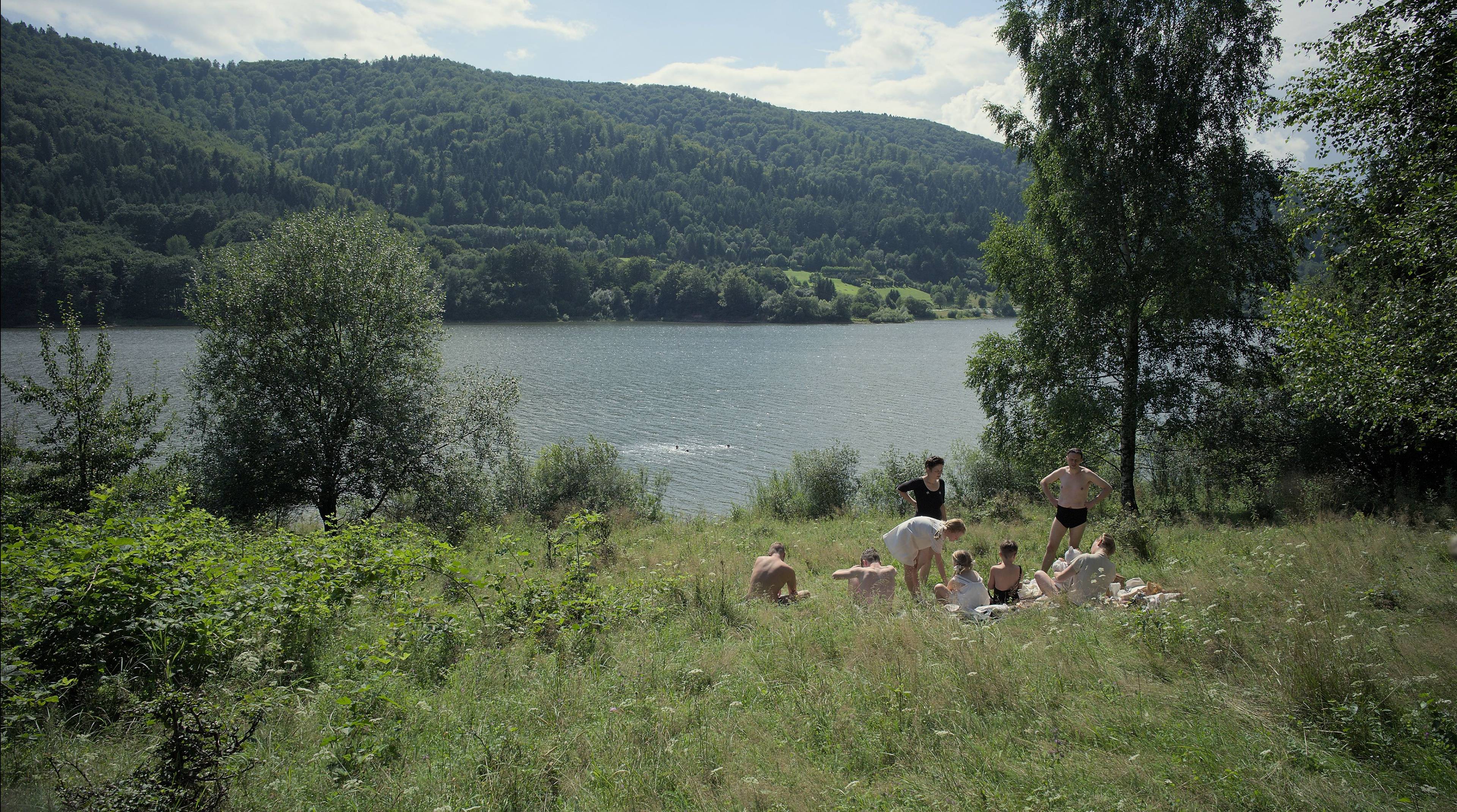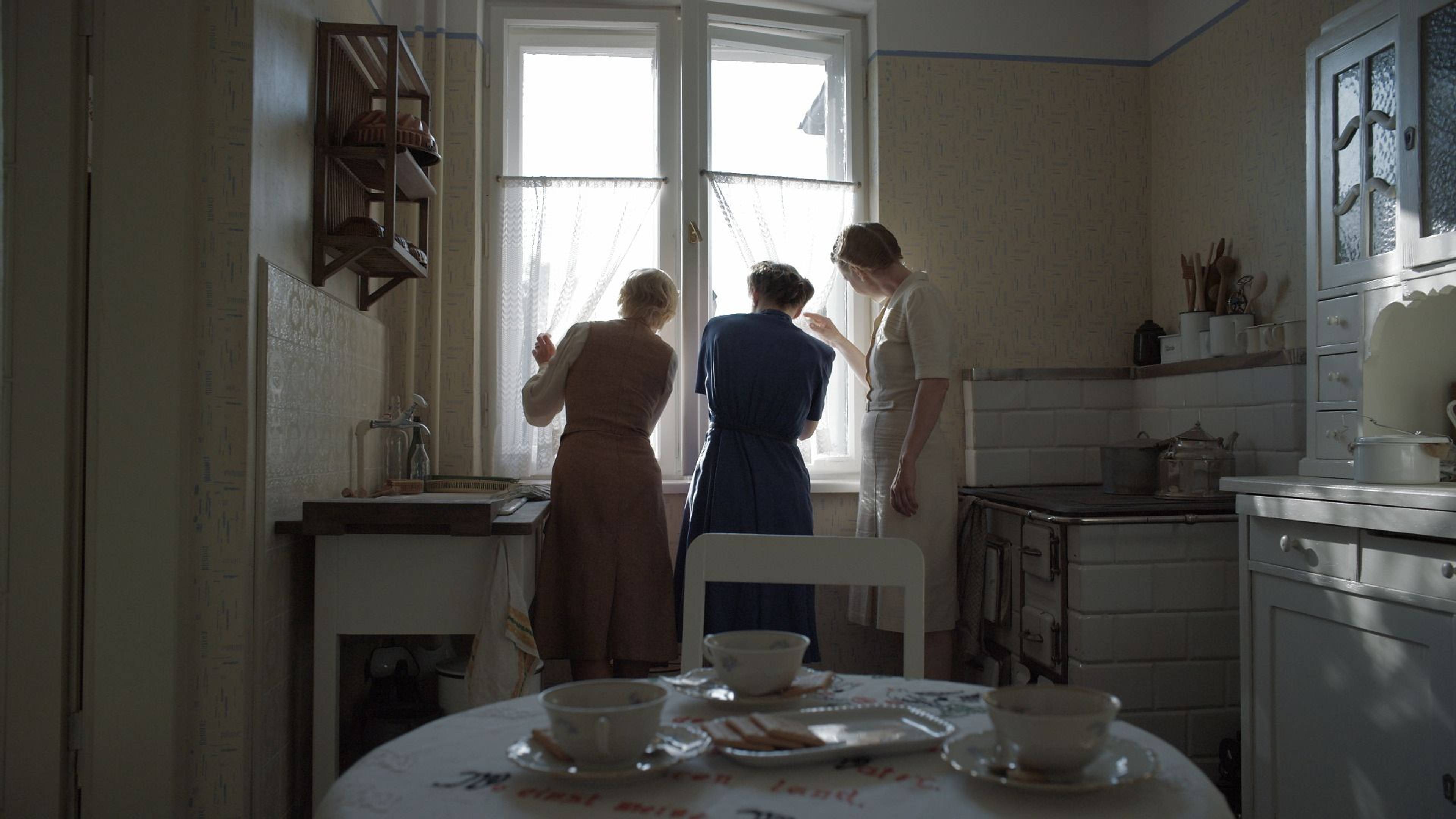I walked out of The Zone of Interest (2023) feeling horrified and also vaguely proud of myself. It seemed as though moral outrage and disgust were the only sensitive responses to a Holocaust film in which we spend all our time hanging out with Nazis and absolutely none of it bearing witness to the millions of victims of their nigh-unfathomable cruelty. Who in their right mind would want to make such a movie? “That Jonathan Glazer is sure going to have a lot of angry mobs to contend with when this reaches theaters,” I said to myself. And, satisfied by my analysis, I took the train home and tried to forget the whole ordeal.
But I could not forget, and, after spending enough time haunted by it, I realized I didn’t want to. This is because The Zone of Interest only pretends to care about the lives of the Nazis it forces us to spend time with. Really, it’s a movie about the politics of memory, and since it arrives at one of the most important moments in our own history of remembering the Shoah, it is a massively significant film. That’s not to say it’s fun to watch, but we look away at our peril.
The Zone of Interest stars Christian Friedel as Rudolf Höss (a real Nazi commandant, hung at Nuremburg) and Sandra Hüller as his wife, Hedwig, who have built a charming little bungalow directly onto the front exterior of Auschwitz. (The film’s title is a direct translation of das Interessengebiet, a German euphemism for the area around and including the camp.) They share this cozy compound with their five young children and several Jewish maids, and everyone seems stoically indifferent to the screams and occasional gunshots that issue constantly from over the wall.
The Hösses are a happy family. When the movie starts, Hedwig has just surprised her husband with a glossy wooden canoe to celebrate his birthday – not the sort of gift just any wife could whip up in the middle of a war. Every week, she sends Hitler a bouquet of flowers from her gardens. Fortune seems to be smiling on Rudolf, who works very hard on the other side of the wall. While we see none of what his day is like, he’s always mulling over paperwork in the evening or making phone calls after hours – many of them focused on preventing his promotional transfer to Berlin. He sees women in his home office, too, brought in by his underlings through a side entrance to the camp. (The real-life Höss had sexual relations with Eleanor Hodys, a prisoner who, after she became pregnant, was confined to a standing-only cell, then given an abortion in the medical ward of Josef Mengele.) Afterward, Höss follows a tunnel under the house to a secret bunker, which has a sink and towels, so he can scrub his nether regions without arousing the suspicion of his wife.
As a series of garden parties, canoe rides, and visits from in-laws, the Hösses’ daily lives strain toward a normalcy that is truly maddening to behold, especially given their hellish soundscape. (In a perverse move by Glazer, this din never stops, but fades to such low volumes that, at times, it’s possible to feel as though you’re the one tuning out the screams.) The sole instance of direct conflict onscreen occurs when Rudolf’s transfer orders can no longer be ignored. Hedwig, distraught, demands to stay behind with the children in Auschwitz. “They’d have to drag me out of here,” she says, “We’re living how we dreamed we would, since we were seventeen. Beyond how we dreamed!” Naturally, these fascists care more about their ideals than they do about each other, so it’s not long before Rudolf is in Berlin, alone.
The Zone of Interest ends with a radical cinematic rupture, one that puts an alarming twist on all the suffocating normalcy we’ve witnessed thus far. Rudolf, coming back late from a kind of gestapo Met Gala (was that a swastika ice sculpture?), is climbing the stairs of his unlit apartment building when he pauses to peer down a dark hallway. Suddenly, we cut away to a documentary montage, shot in the present day, of a group of maintenance workers cleaning the Hösses’ beloved Auschwitz house, which has since become a museum. The janitors polish the glass panes of vitrines containing leg braces, striped pajamas, little mountains of shoes – and they go about their business in much the same way as Rudolf went about his, in the sense that they clearly no longer connect those masses of objects to individual lives.
At its worst, the reflexive ritualization of history serves only to shut the door around a hypothetical present, a small corner of time where the world was never cruel.
We flash back to 1943. A reaction shot of Rudolf, looking for all the world like he’s seen exactly what we’ve just seen. A premonition? He bends over and gags, dry heaving, before pulling himself together to carry on with his business.
The saeculum, for those who don’t know, is a unit of measurement dating back to Roman times, where it was used to gauge the length of empires. It accords to the limits of lived experience: In short, one saeculum is the length of time it takes for an event to transpire and all the people who lived through it to pass away, at which point it passes from personal memory to the property of collective will. It is remembered on this basis – or eventually forgotten.
Today, we stand on the threshold of the Holocaust’s saeculum. Its victims and witnesses who have survived through our present were generally very young during the Second World War, and are now invariably very old; soon, there will be no one left to tell us what it was actually like. At this inflection point, The Zone of Interest attempts to show the horrors of Auschwitz from strictly outside its walls. While this seems barbaric, it makes sense: In 2023, we can only broach these walls as tourists, a form of alienation from memory and history that feels almost sacrilegious to the tragedy of the place. “A crematorium might look a bit like a postcard,” the narrator notes presciently in Alain Renais’s haunting Night and Fog (1956), made scarcely ten years after the liberation of Auschwitz. “Today tourists have their picture taken in front of them.” Half a century later, in 2016, the Ukrainian director Sergei Loznitsa made Austerlitz, a documentary that follows busloads of tourists through the camps, past the iron gate bearing Arbeit Macht Frei (Work Makes You Free) and into the gas chambers, where they hold up selfie sticks. Though it lacks commentary, that movie feels feverishly perverse, as we find ourselves alienated by our own methods of protecting ourselves from the past.
In The Zone of Interest, our proximity to the camp’s entirely invisible victims becomes increasingly oppressive, their traces merely refracted in the sounds and images that make it over those unscalable walls. This proximity is (hopefully) the only one we have in common with the Hösses, who are otherwise model Nazis – cruel, self-serving, obsessively deferential, patently inhuman, calmly psychopathic. We hate them. And yet, we cannot identify with the other side, as it no longer survives to be identified with.
Facing down the horrors of history is a devastating undertaking. Appeals to sensitivity – whether in the form of framing devices, controlled language, or memorials that fade mildly into their landscapes – have always helped to make them more digestible for the masses. These rituals have their place, but the irony of memory politics is that any attempt to grow comfortable with something as obscene as the industrial murder of eleven million people, among them six million Jews, inevitably recapitulates the Nazi agenda, neatly tucking atrocity behind the mask of bureaucracy. At its worst, the reflexive ritualization of history serves only to shut the door around a hypothetical present, a small corner of time where the world was never cruel.
The Zone of Interest is that present – it attempts to show life only in that poorly minded rift where atrocity never occurred, and isn’t occurring now, as though everything has always gone according to plan. This is what creates the obliterating bleakness at the film’s terrifying core. It made me realize that, in a desperate attempt to overcome its horrors, we have slowly opted to sentimentalize the Holocaust. No longer capable of looking directly atit, the intervening years of failure have brought increasing identification with the onlookers, the minders. Thus, we move from Night and Fog to Schindler’s List (1993), through The Boy in the Striped Pajamas (2008) and Austerlitz – and, finally, this Holocaust movie, where the victims are merely an allusion. It’s a horrible masterpiece.
___



